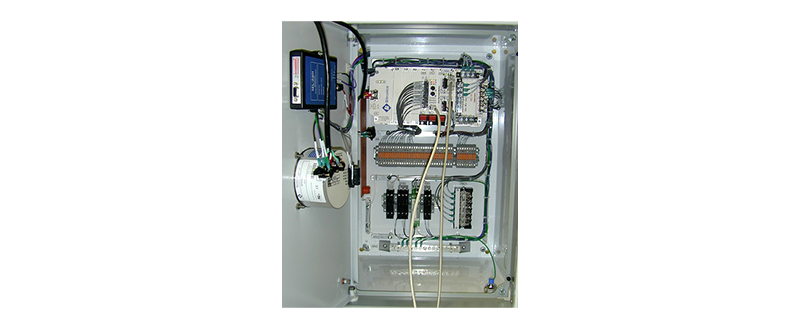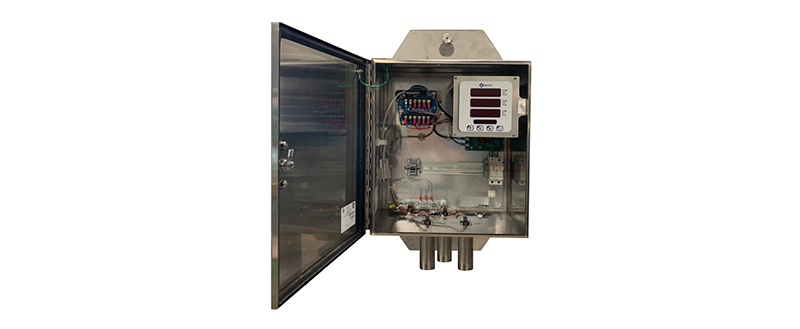
Disturbance Monitoring Equipment (DME) Retrofit Solution Complies with NERC PRC-002-2 Requirements
PUBLISHED ON Aug 17, 2020
Advances in Disturbance Monitoring Equipment (DME) provide utilities with an economical retrofit solution to comply with NERC PRC-002-2 requirements.
Utilities are facing an upcoming 2022 deadline from the North American Electric Reliability Corporation (NERC) to fully comply with an updated protection and control standard (PRC-002-2) for disturbance monitoring and reporting requirements for transmission and generation systems. The first milestone is 50% compliance by January 1, 2021, followed by 100% compliance by July 1, 2022.
The objective is to be able to standardize regional reliability requirements and requires utilities to install Disturbance Monitoring Equipment (DME). The data collected by this equipment enables NERC to conduct forensic analyses of power failures to detect the causes in order to improve the safety and reliability of power delivery management.
“The NERC standard requires a continuous, high resolution 10 day recording of up to nine measurements per line of per-phase volts and amps, total MW and MVARs, and frequency,” says Bryan Gehringer, Senior Application Engineer at NovaTech, provider of the Bitronics meters and IED solutions deployed in over 1200 U.S. utilities. “In addition, disturbances of interest must be archived for three years.”
DME, as defined in the PRC002-02, must monitor Sequence of Events Recording (SER) Fault Recording (FR) and Dynamic Disturbance Recording (DDR) data. SER and Fault Recording functions are already well understood and widely deployed throughout the industry, but the DDR function is relatively new and generally available in more expensive digital fault recorders (DFRs).
Although the majority of 230kV and higher voltage substations are likely already constructed with DFRs, the requirement for DME placement is based on the MVA short-circuit capacity of the bus, and so includes some lines down to 100kV. That is a voltage level where DFRs are not typically part of the original design.
In those locations, it may be necessary to add recording capability to an operational substation where there may not be room to retrofit a traditional DFR, and where pulling new CT, PT and I/O cables to one location would be a major undertaking.
Traditional microprocessor-based protective relays are also able to perform fault recording, but typically do not have the memory to monitor and store continuous flows of information for 10 days as required by the PRC standard.
“Depending on protective relays to provide DDR data is clunky, expensive and maintenance intensive,” says Gehringer. “Even if a utility could stream all the data from the relays to a central computer in real-time, the bandwidth required is massive and the amount of storage space needed would add to the cost,” he adds.
Utilities, therefore, have a need for simplified, economical solutions that can be retrofitted into existing substations to ensure compliance with PRC-002-2. According to Gehringer, one solution between relay-based recording and DFRs are small, three-phase single-line devices that can utilize existing CTs and PTs that are already routed to protective relays. This is an attractive retrofit option that is more cost effective than installing full-size DFRs.
These Intelligent Electronic Devices (IEDs) are purpose built for this task and only require the space of a relay. One solution on the market, the 70 Series made by Bitronics, is compliant with NERC standards in SER, FR and DDR recording. Operating at a rate of 30 samples per second, it captures frequency, total watts and VARs and all three phases of volt and phase amps.
One of the specific challenges of the new NERC standard is preserving 10 days of continuous DDR recording data. R8 in the PRC-002 distinguishes continuous DDR recording from triggered DDR recording. Continuous is preferred.
The Bitronics M871 resolves this issue by supporting multiple logical recording functions in each unit. Each logical recorder includes two independent fault recorders, two independent disturbance recorders, a trend recorder, and a SER recorder.
The various logical recorders in the unit can capture data often with a different duration, range and resolution. They can also be triggered by entirely different criteria and can be programmed to operate simultaneously or independently. Because each logical recorder requires a few seconds to convert the data and store it in non-volatile memory, the disturbance recorders are run in alternating hours producing a sequence of COMTRADE (Common format for Transient Data Exchange) files that are each one hour in duration.
By allocating sufficient memory to store 240 one-hour-long COMTRADE files, no data is lost and a circular buffer is created that resides on the M871 with new data overwriting old data after ten days. In other words, the DDR data does not need to be streamed in real time across a network to a separate computer. It does not even need to be downloaded, organized, or archived, except when NERC requests the data. At that point, only the data in the range of time NERC requests needs to be downloaded.
In addition to providing all the recorded data required for PRC-002-2, the IEDs are expandable and can also provide additional real-time data to Supervisory Control and Data Acquisition (SCADA) systems with tremendous accuracy. The IEDs can be configured to perform power quality functions not available in a protective relay, thereby effectively operating as a substation SCADA recorder device. In this way, the unit can provide more information on current and power than a power quality meter, which is usually focused mostly on voltage anomalies.
As utilities assess their options for compliance with the NERC standard, the emergence of the IED-based distributed event recording model sits between protective relays and DFRs on the recording spectrum offering better recording capabilities than relays and lower costs and easier deployment than DFRs.


